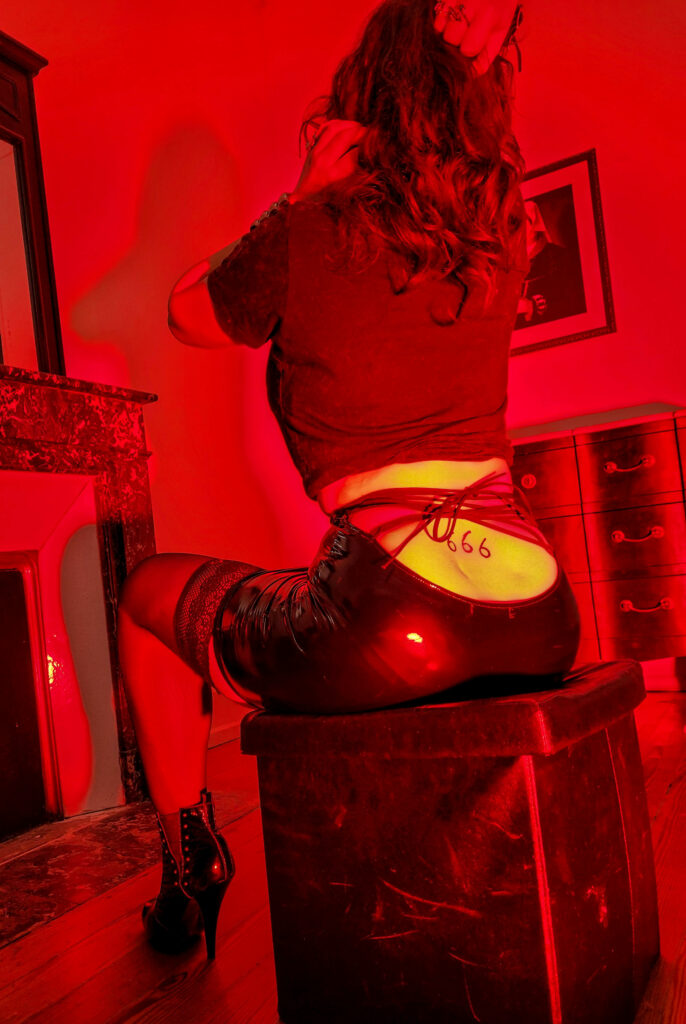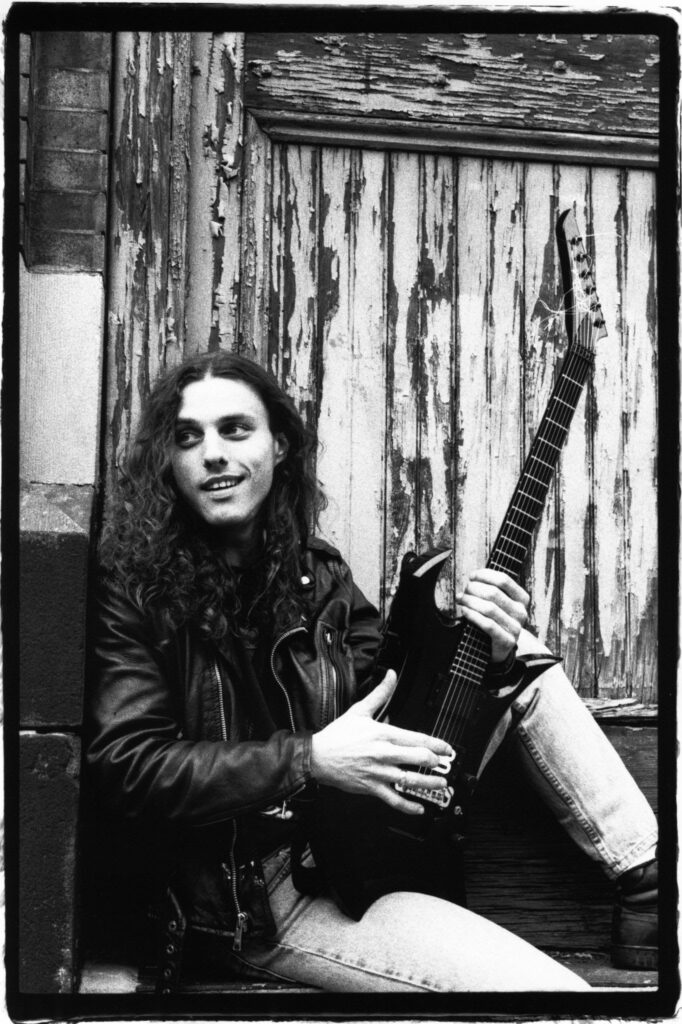Death Metal
Observing the progress in Heavy Metal music, you can see clearly that Death Metal is in the natural course of evolution for Thrash Metal, Speed Metal and early Black Metal.

Chuck Schuldiner, the frontman and lead guitar of Death, one of the most representative bands of this genre, says in one interview from 1991 that his main inspiration was bands like Venom, Mercyful Fate, Exciter, early Metallica and Anvil.
Slayer, a Thrash band formed in 1981, was also a source of inspiration for the birth of Death Metal.
The second album by Slayer, Hell Awaits, is credited with “essentially inventing” much of the sound and rage that would later become Death Metal. Their third album, Reign in Blood, inspired the creation of the Death Metal subgenre, according to AllMusic. Most representative bands in the genre, including Death, Obituary and Morbid Angel, were significantly influenced by it.
Death Metal also follows the rule of only three main instruments: guitar, bass and drums. The lyrics also approach similar subjects to Thrash and may address slasher-style violence, politics, religion, philosophy, true crime, and science fiction. Fewer songs about demons and Satan compared to Black Metal, and as Schuldiner said:
“Reality is far more evil than a demon. You know, there is no tearing someone’s heart out. That just does not happen in life. I see no demons around me.
I see… I think… If there’s evil, it’s people.”
Chuck Schuldiner
The main characteristics of Death Metal’s musical arrangements are deep growling vocals but also clear singing eventually, heavily distorted and low-tuned guitars played with techniques like palm muting and tremolo picking, powerful, aggressive drumming with double kick and blast beat techniques, minor keys or atonality, swift changes in tempo, key, and time signature and chromatic chord progressions are typical in a Death Metal composition.
To fully understand Death Metal, you need to get an overview of what was going on in the music world in the late 80s and early 90s with the arrival of Grunge.
It was a dark period for Metal, with Grunge ruling and swallowing youths’ hearts with Nirvana and Alice in Chains on the scene. Stealing a big chunk of capital from the music industry market, then inclined full steam towards the chill guys from Seattle.
Some thrash bands changed direction and adapted with a more commercial sound, but Thras lived through despite all, sharing the scene with Death Metal and Glam.
Death Metal never had a large following, but for some ardent Heavy Metal fans, it was a better option than Pop-metal or bands like Metallica and Megadeth, who ended up somehow losing their initial identity but were still selling millions of records in the early 1990s. Death Metal maintained a modest but devoted cult throughout the 1990s and, in turn, inspired Melodic Death Metal. Schuldiner’s “Voice of the Soul” is a true musical masterpiece inspiring many Melo Death bands born during the ’90s.

If you listen to “Voice of the Soul”, a very touching piece, you will certainly be touched by Schuldiner’s manner of expressing his feelings through his guitar.
Other early American Death Metal bands include Macabre, Master, Massacre, Immolation, Cannibal Corpse, Obituary, and Post Mortem, in addition to Possessed and Death.
Since then, Death Metal has evolved and given rise to numerous subgenres. Melodic Death Metal blends aspects of the new wave of British heavy metal and Death Metal. The complicated musical genre known as technical Death Metal features strange time signatures, unorthodox rhythms, and peculiar harmonies and melodies.
Death-Doom is a genre of Metal that blends the slow tempos and depressing mood of Doom Metal with the deep snarled vocals and double-kick drumming of Death Metal.
Grindcore’s speed, intensity, and brevity are combined with Death Metal’s complexity in genres like Deathgrind, Goregrind, and Pornogrind. Deathcore blends elements of Metalcore and Death Metal.
Death Metal’s growled vocals and heavily distorted, out-of-tune guitar riffs are combined with elements of Heavy Metal and hard rock from the 1970s to create Death ‘n’ roll.
Blackened Death Metal, a subgenre of Death Metal that incorporates Black Metal and Death Metal elements, has a primarily “satanic” theme. Alternating between guttural and “ripped” vocals, a focus on musical skill rather than the usual rawness of Black Metal, and the sporadic use of riffs that are more “melodic” and intricate than Black Metal yet darker in climaxes than Death Metal are few examples of what this may look like. It falls somewhere in the middle of the styles; it isn’t only a Death Metal subgenre. Some bands include Sarcophagus, Blasphemy, Behemoth, Dissection, Blasphemy, Belphegor, and Angel Corpse.
The most extreme form of Death Metal is known as Brutal Death Metal; bands that pioneered this genre include Krisiun, Nile, Suffocation, Cannibal Corpse, and Immolation. Brutal Death Metal is distinguished by its extremely guttural vocals, lyrics sung slowly in time with the guitar riffs, and abrupt tempo changes. However, the definition of the genre has evolved through time, and nowadays, bands who fit the description of Brutal Death Metal sound even more violent, have more brutal vocals and lyrics than before, and nearly always incorporate a gore theme. Dying Foetus and Decapitated are good representative bands in the genre.
Death Metal Subgenres.
Sub-genres
Blackened Death Metal has a predominantly “satanic” theme; this sub-genre mixes elements of the death metal sound with black metal. This may include alternation between guttural and “ripped” vocals, greater emphasis on musical technique (different from the standard rawness of Black Metal), and the occasional inclusion of riffs that are more “melodic” and complex than Black Metal and darker in mood than death metal. It is intermediate between the styles, not exactly a sub-division of Death Metal simply. Some bands: Angel Corpse, Behemoth, Dissection, Blasphemy, Belphegor, Cryonics, Sarcófágo.
Brutal Death Metal is the most extreme style of Death Metal.
Bands like Krisiun, Nile, Suffocation, Cannibal Corpse and Immolation, among other big names, started this style with an extremely guttural vocal, with lyrics sung slowly. Following the guitar riffs and with sudden tempo changes. However, today, the concept of the genre has changed, and bands considered Brutal Beath Metal sound even more extreme and have more brutal vocals than the old ones, with almost necessarily gore themes.
Melodic Death Metal features more melody and harmonies on guitars. Musically, a rescue from NWOBHM or an incorporation of the more “melodic” riffs of Doom-Death Metal, accelerating them.
This subgenre was originally associated with Carcass, who, on the album “Heartwork”, influenced the biggest bands in the style. Some bands: Carcass, At the Gates, Dark Tranquility, Hypocrisy, Arch Enemy, In Flames, Soilwork, Scar Symmetry, DevilDriver, Wintersun, Children of Bodom and Amon Amarth.
Technical Death Metal and Progressive Death Metal incorporate the changing tempo and rhythm characteristics of Progressive Metal. The focus is on musical complexity and instrumental technique. Sometimes, it shows a strong jazz influence, alternating between guttural vocals and more distorted and aggressive instrumentals to clean vocals, slowed-down rhythm, and acoustic guitars, among others. Some bands: Atheist, Dying Fetus, Cryptopsy, Cynic, Divine Heresy, Suffocation, Nocturnus, Death (after the release of Human), Necrophagist, Nile, Capharnaum and Brain Drill, Edge of Sanity, Opeth, Extol, Pan-Thy-Monium and Gojira.
Death/Doom Metal is a sub-genre that, in principle, mixes the “traditional” Doom Metal of Candlemass and Trouble with the Extreme Metal of Death and Morbid Angel. This mix incorporates the slow tempos, melancholic atmosphere and Black Sabbath-inspired riffs of Doom, combining them with the speed, guttural vocals and atonal riffs of Death Metal.
Several bands that started making Death/Doom Metal later changed their style. Some bands: Cathedral, Paradise Lost, Anathema, My Dying Bride, Draconian, Amorphis, The Gathering, November Doom, Acid Witch, Winter, Estatic Fear, Katatonia, and Swallow the Sun.
Goregrind, Deathgrind and Porngrind are genres that fuse Brutal Death Metal with Grindcore. The style’s main characteristics are extremely fast drum tempos, distorted guitars that emit a muffled sound, variant riffs, frequent tempo changes, and short songs; in some bands, we notice the presence of breakdowns and pig vocals.
Squeal originates from Grindcore; in general, the vocals are unintelligible. The lyrics of the songs are controversial and generally address themes related to death, murders, extreme violence, mutilation, violation of corpses, pathological diseases and, in some bands, pornography and explicit sex. Some bands: Carcass, Terrorizer, Napalm Death, Brujeria, Cattle Decapitation, Pig Destroyer.
Deathcore emerged with the rise in popularity of Metalcore, with modern traces of this style having been used in Death Metal. Bands like Whitechapel, Carnifex, Chelsea Grin, Betraying the Martyrs and Suicide Silence combine Metalcore with Death Metal. Characteristics of Death Metal, such as fast and dynamic tempo on the drums (including the machine), low-tuned guitars, “distortions”, and guttural vocals, are combined with slower, rhythmic riffs and breakdowns. In the case of some groups, such as Despised Icon and Bring Me the Horizon, lyrical themes are less centred on death and violence and more on personal issues, such as loneliness and the human condition. This metalcore/death metal hybrid is often referred to as Deathcore.
Death ‘n’ Roll is a style that combines strong death metal vocals and highly distorted low-pitched guitar riffs alongside elements of 1970s hard rock and heavy metal. Notable examples include Carcass (on the album Swansong), Entombed, Gorefest, Avatar and Six Feet Under
Interview with Chuck, where he talks about being the “father of Death Metal”.
https://www.youtube.com/watch?v=EmwE5cI_3tE
